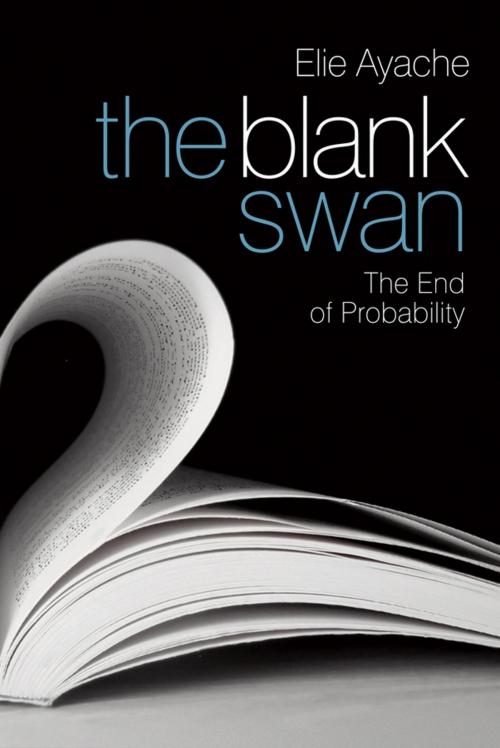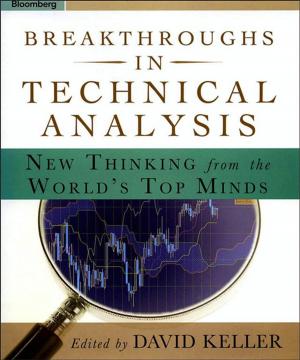| Author: | Elie Ayache | ISBN: | 9780470661765 |
| Publisher: | Wiley | Publication: | May 5, 2010 |
| Imprint: | Wiley | Language: | English |
| Author: | Elie Ayache |
| ISBN: | 9780470661765 |
| Publisher: | Wiley |
| Publication: | May 5, 2010 |
| Imprint: | Wiley |
| Language: | English |
October 19th 1987 was a day of huge change for the global finance industry. On this day the stock market crashed, the Nobel Prize winning Black-Scholes formula failed and volatility smiles were born, and on this day Elie Ayache began his career, on the trading floor of the French Futures and Options Exchange.
Experts everywhere sought to find a model for this event, and ways to simulate it in order to avoid a recurrence in the future, but the one thing that struck Elie that day was the belief that what actually happened on 19th October 1987 is simply non reproducible outside 19th October 1987 – you cannot reduce it to a chain of causes and effects, or even to a random generator, that can then be reproduced or represented in a theoretical framework.
The Blank Swan is Elie's highly original treatise on the financial markets – presenting a totally revolutionary rethinking of derivative pricing and technology. It is not a diatribe against Nassim Taleb’s The Black Swan, but criticises the whole background or framework of predictable and unpredictable events – white and black swans alike - , i.e. the very category of prediction.
In this revolutionary book, Elie redefines the components of the technology needed to price and trade derivatives. Most importantly, and drawing on a long tradition of philosophy of the event from Henri Bergson to Gilles Deleuze, to Alain Badiou, and on a recent brand of philosophy of contingency, embodied by the speculative materialism of Quentin Meillassoux, Elie redefines the market itself against the common perceptions of orthodox financial theory, general equilibrium theory and the sociology of finance.
This book will change the way that we think about derivatives and approach the market. If anything derivatives should be renamed contingent claims, where contingency is now absolute and no longer derivative, and the market is just its medium. The book also establishes the missing link between quantitative modelling (no longer dependent on probability theory but on a novel brand of mathematics which Elie calls the mathematics of price) and the reality of the market.
October 19th 1987 was a day of huge change for the global finance industry. On this day the stock market crashed, the Nobel Prize winning Black-Scholes formula failed and volatility smiles were born, and on this day Elie Ayache began his career, on the trading floor of the French Futures and Options Exchange.
Experts everywhere sought to find a model for this event, and ways to simulate it in order to avoid a recurrence in the future, but the one thing that struck Elie that day was the belief that what actually happened on 19th October 1987 is simply non reproducible outside 19th October 1987 – you cannot reduce it to a chain of causes and effects, or even to a random generator, that can then be reproduced or represented in a theoretical framework.
The Blank Swan is Elie's highly original treatise on the financial markets – presenting a totally revolutionary rethinking of derivative pricing and technology. It is not a diatribe against Nassim Taleb’s The Black Swan, but criticises the whole background or framework of predictable and unpredictable events – white and black swans alike - , i.e. the very category of prediction.
In this revolutionary book, Elie redefines the components of the technology needed to price and trade derivatives. Most importantly, and drawing on a long tradition of philosophy of the event from Henri Bergson to Gilles Deleuze, to Alain Badiou, and on a recent brand of philosophy of contingency, embodied by the speculative materialism of Quentin Meillassoux, Elie redefines the market itself against the common perceptions of orthodox financial theory, general equilibrium theory and the sociology of finance.
This book will change the way that we think about derivatives and approach the market. If anything derivatives should be renamed contingent claims, where contingency is now absolute and no longer derivative, and the market is just its medium. The book also establishes the missing link between quantitative modelling (no longer dependent on probability theory but on a novel brand of mathematics which Elie calls the mathematics of price) and the reality of the market.















